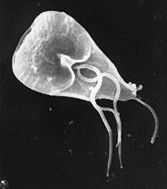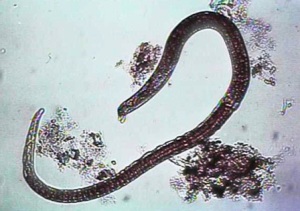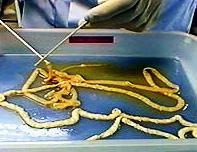Parasitic Diseases in North America
One would think that parasitic diseases in North America would be rare because the food supplies would be relatively free from parasites that could cause infections in humans. North Americans have a better level of hygiene and more thorough cooking of our foods. However, the fact is that certain parasitic diseases in North America are just as common as in many third world countries.
Worms and other nasty microscopic parasites can easily develop in your intestine when your immune system is operating poorly due to an ongoing illness or a diet that is low in actual nutrition.
There are still a few parasitic diseases in North America that we should be aware of and take active steps to avoid. Most of the infectious parasites are microscopic, but a few are types of worms that can grow to up to 20 feet inside the intestines. We are going to discuss a few of the more common food parasites in North American foods, their symptoms, and prevention of infection.

Giardia Duodenalis
Giardia Duodenalis is a microscopic parasite that is found all over the world. This germ has become recognized as the leading cause of water or food borne parasitic diseases. Symptoms include diarrhea, abdominal cramps, and nausea. Some people may contract the infection and never experience any symptoms.
Prevention is mainly a matter of avoiding drinking water from untreated supplies. If one must drink water from a source other than a treated municipal water supply, boil the water for at least a minute to kill the parasites. Practicing good hygiene and washing hands often, especially after going to the restroom and both before and after handling food is also important.

Trichinella Spiralis
Trichinella Spiralis is the name of the roundworm that causes trichinosis. These intestinal roundworms produce larvae that travel from the intestinal tract to various muscles of the body.
Trichinosis infection is classified as a type of food poisoning. Symptoms can be severe and include nausea, diarrhea, stomach pain, fever, and vomiting at first. Symptoms then progress to include headaches, muscle and joint aches, itchy skin, eye swelling, and weakness. The worst cases can cause breathing and heart problems or even death.
Undercooked pork was once the primary source of trichinosis infection, but improvements in the quality of feeds given to hogs and better cooking practices have reduced the number cases seen in North America. However, several types of wild game can still contain the organisms, so thorough cooking is the best form of prevention of the disease.

Tapeworms
Tapeworms can be found in both pork and beef. Although two different species, these parasites share some common traits. First, both require a human host to perpetuate their life cycle. Second, they can live for many years in the intestinal tract of an infected individual without causing any symptoms whatsoever. If symptoms are developed, they usually include abdominal pain, unexplained weight loss, digestive difficulties, and in some cases, intestinal blockage. Irritation may develop around the anus in cases where worms or parts of worms are passed anally.
Anyone who consumes undercooked pork or beef is at risk of becoming infected with tapeworms. The only prevention is to cook all meats to a minimum internal temperature of 160 degrees to kill the encysted larvae present in the meat.
Read more on how parasites and toxins sabotage our efforts to stay thin at the Best Top Secret Fat Loss Secret Review. You will find detailed summary of each chapter of Dr. Gudakunst's book, explanation of her SECRET, fat loss tips and other fat loss reviews.

Dr. Oz, Oprah, and long Tapeworms
Filed under Blog, Fat Loss and Toning by ![]()
Leave a Comment
Pings on Parasitic Diseases in North America